1. Inject Calmon V2 Zero points
2. Improved Large Galaxy Processing. Modification allowed processing of all large galaxies, including M31. The end result was the formation of the Large Galaxy Atlas, comprising the largest galaxies observed.
3. Coverage masks and off-scan bright star improvement.
4. Coversion to SNR thresholds.
5. Remove large galaxy bias. We now process large galaxies without any bias as to its nature or even apriori existence.
6. Improve background determination for scans with large galaxies.
7. Enlarge the GALWORKS working "area" for large galaxies. That is, process galaxies with larger working areas, thus capturing more of their flux. The postage stamps are now allowed to grow as large as 5'. Large Galaxy Atlas images have no limit (e.g., M31 is over 1.4 degrees in size).
8. Improved Star Subtraction. Modifications included improvements to both stellar "subtraction" and 2-D ellipse fitting. The basic algorithmic improvements are described here. The primary driver is to improve photometry for galaxies seen through the Galactic plane (and hence confused by foreground stars). Highlights of the new method:
-
For the first "guess" at the 2-D elliptical shape of the galaxy, use the
rotating 2nd moment algorithm.
Before star subtraction, use the first guess shape of the galaxy and subtract this from the image (i.e, remove the galaxy). The galaxy removal is carried out by using the firs-guess axis ratio and position angle. For each elliptical annulus, compute the lower quartile of the pixel distribution. The lower quartile is robust to star contamination. Then subtract the LQ value from each annulus pixel. The G-subtraction is carried out until the point at which the LQ is deep in the noise.
With the galaxy removed, examine the neighboring stars. Subtract the star using the PSF "shape" ("sh") to determine its size or extent and the local background median. Subtract by using the local annulus median for each star: (a) determine size of star, (b) determine annulus size, (c) compute median, (4) using median, determine how much of the star should be removed from the non-galaxy subtracted image. In this way the star is removed without losing any of the galaxy. The danger is removing stars close to the galaxy nucleus. Here the galaxy removal step is not as accurate (due to our sampling and pixelization) and the local annulus median is not well determined. Hence, for sources near the nucleus, do not subtract the star, instead mask it. The masked pixels are later recovered with isophotal substitution.
Here is an example of a typical galaxy in Abell 3558. It is 12.8 mag in K-band. It has a contamining star nearby (along its major axis). The images show the raw K-band field (left image), and the stars subtracted image (center) and the 3-sigma and 1-sigma (20 mag /arcsec^2) elliptical isophotes. The plot shows the mean surface brightness in elliptical annuli about the galaxy. The green dashed line cooresponds to the isophotal radius (20 mag/arcsec^2). The red dotted line is the exponential fit to the disk, with extrapolation to eight times the disk scale length. The extrapolation results in an additional 0.35 mags (i.e., the total flux of the galaxy is closer to 12.5).

|
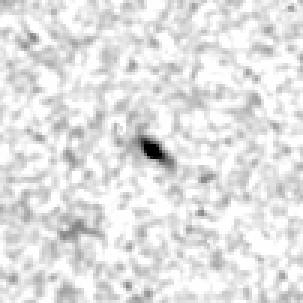
|
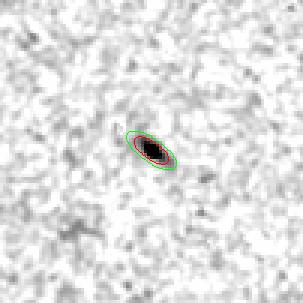
|
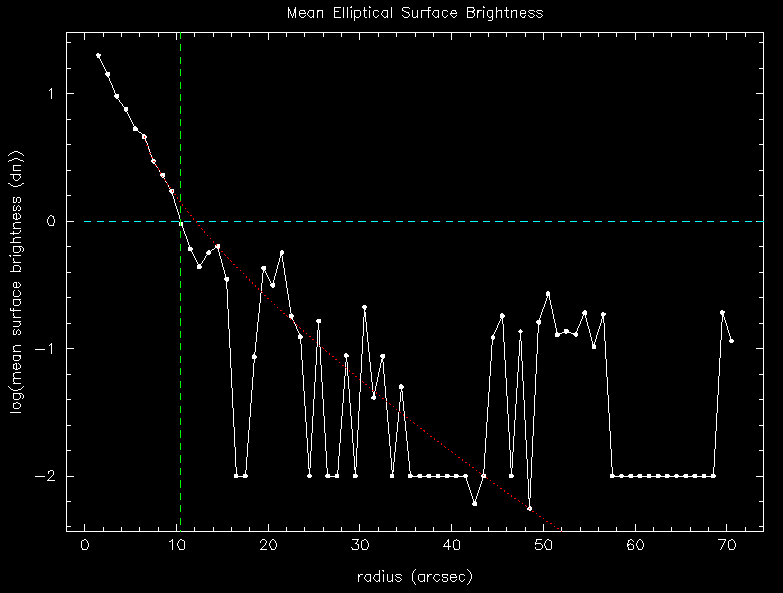
With stars removed, determine the true isophotal shape (2-D ellipse) of the galaxy.
This process is iterated twice to robustly determine the ellipse shape.
The modfication includes adding three new "planes" to the postage stamp images.
Current planes: 1 = J, 2 = H, 3 = K.
New Planes: 4,5 6 = J, H, K with stars subtracted or removed
The following examples show some galaxies with their neighboring stars removed. The images are the galaxy postage stamps. The first galaxy is a Hercules spiral used for T-F distance calibration. The second is a bright galaxy in the Abell 3558 cluster (note the smaller galaxies around it; they do not smoothly subtract away because they are not point sources.) The last galaxy is a spiral located within th e ZoA. The contours show the 3-sigma isophote (red) from which the elliptical orientation is derived, and the 20 mag/arcsec^2 isophote (green), the standard photometry isophote.
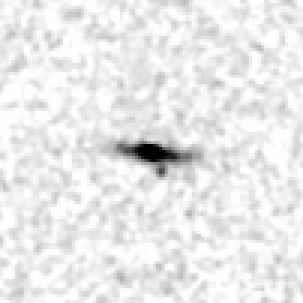
|
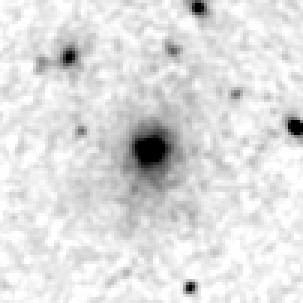
|
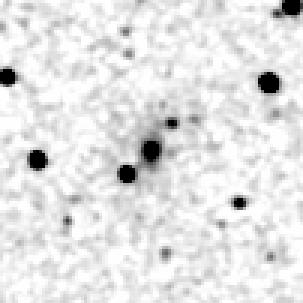
|
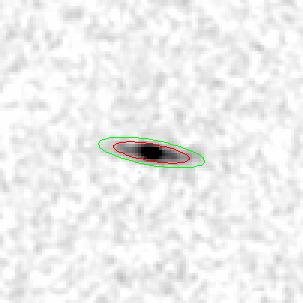
|
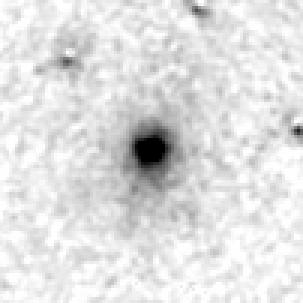
|
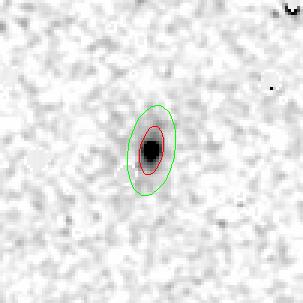
|
9. Re-built OBDT using updated training sets.
10. Injected the OBDT classifier into GALWORKS V3. GALWORKS now computes the E and G-scores on the fly. It rejects sources whose E and G scores exceed a value of 1.75 (i.e., rather generous, erring on the side of completeness, but still eliminating unwanted stars).
11. Added Huchra star-galaxy classifier to the OBDT; see Getting Rid of Stars
12. Constructed a better surface brightness metric (half-light measures via the total mag extrapolation)
13. Improved the Kron and Total photometry; see the memo Large Aperture Photometry: Profile Fitting, Isophotal & Total Mags
14. Improved star subtraction for edge-on galaxies. The improvement is to minimize subtraction of "sources" on the major-axis of inclined galaxies (i.e., avoid subtracting pieces of the galaxy from itself)
15. Improved the postage stamp FITS cube images. They are now *six* planes deep, with the first three planes the nominal set (J, H, Ks), and the additional three planes the same except with stars subtracted. These allow the user to perform direct photometric measurements on the postage stamps without the deleterious stellar contamination. The FITS header has also been update (and improved). Here is an example of a new postage stamp FITS header.